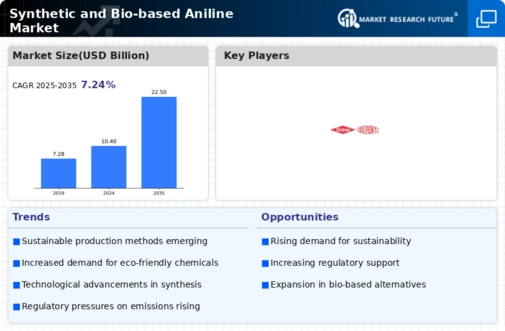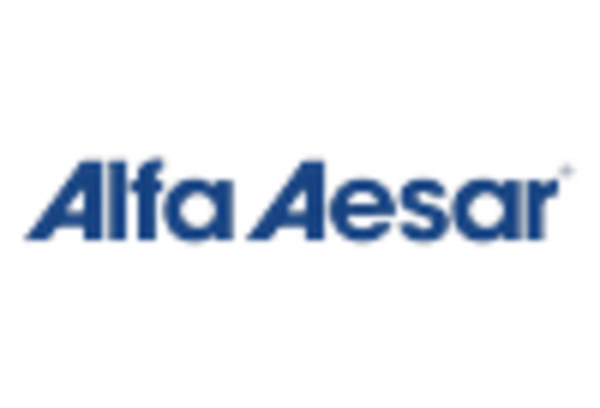Market Trends
Key Emerging Trends in the Synthetic Bio-Based Aniline Market
The market trends of synthetic and bio-based aniline reflect a dynamic landscape shaped by various factors, including environmental concerns, technological advancements, and the demand for sustainable alternatives. Synthetic aniline, traditionally derived from petrochemical sources, has been a staple in various industries, such as textiles, rubber, and plastics. However, the growing awareness of environmental issues has led to an increased focus on bio-based alternatives. Bio-based aniline, produced from renewable resources like biomass or agricultural waste, has gained traction as a more sustainable option.
One notable trend in the synthetic aniline market is the ongoing efforts to enhance production processes and reduce environmental impact. Innovations in catalysis and manufacturing techniques are driving improvements in efficiency and minimizing waste. This trend is not only driven by environmental concerns but also by the need for cost-effective and resource-efficient production methods. Companies are increasingly investing in research and development to create more sustainable synthetic aniline products that align with stringent environmental regulations.
On the other hand, the bio-based aniline market is experiencing a surge in interest and investment. With a focus on reducing dependence on fossil fuels and mitigating the carbon footprint, industries are exploring bio-based alternatives as a viable option. The use of renewable feedstocks in the production of bio-based aniline aligns with the global push for a circular economy and reduced environmental impact. Market players are actively engaged in developing scalable and economically viable processes for bio-based aniline production, leveraging advancements in biotechnology and green chemistry.
Environmental regulations and consumer preferences are playing a crucial role in shaping market dynamics. Stringent regulations regarding the use of certain chemicals and the environmental impact of manufacturing processes are prompting industries to explore sustainable alternatives. Consumers, increasingly conscious of the environmental footprint of the products they use, are driving demand for eco-friendly options. This shift in consumer behavior is influencing manufacturers to incorporate bio-based aniline into their products and adopt more sustainable practices, thereby shaping market trends.
The textile and apparel industry is a significant consumer of aniline, both synthetic and bio-based. As sustainable fashion gains momentum, there is a growing demand for textiles produced using environmentally friendly processes and materials. This shift is driving the adoption of bio-based aniline in the textile industry, offering a more sustainable choice for dyeing and finishing processes. Manufacturers are recognizing the importance of aligning with market trends to meet consumer expectations and regulatory requirements.
Despite the increasing popularity of bio-based aniline, challenges such as scalability, cost competitiveness, and the need for technological advancements still exist. The synthetic aniline market, with its well-established infrastructure, continues to dominate in terms of volume. However, the bio-based segment is expected to witness substantial growth as advancements in technology address these challenges, making bio-based aniline a more viable and competitive option.

















Leave a Comment